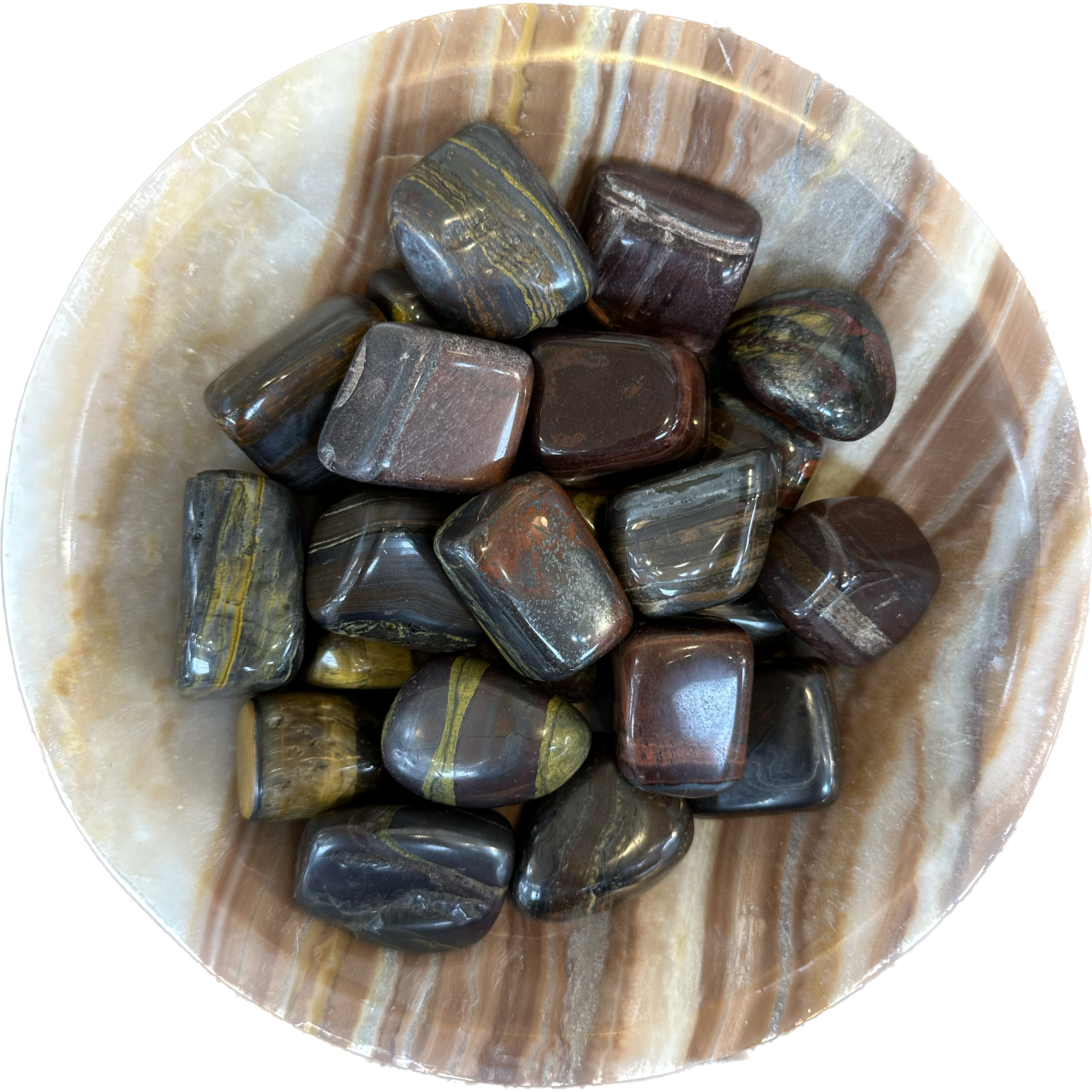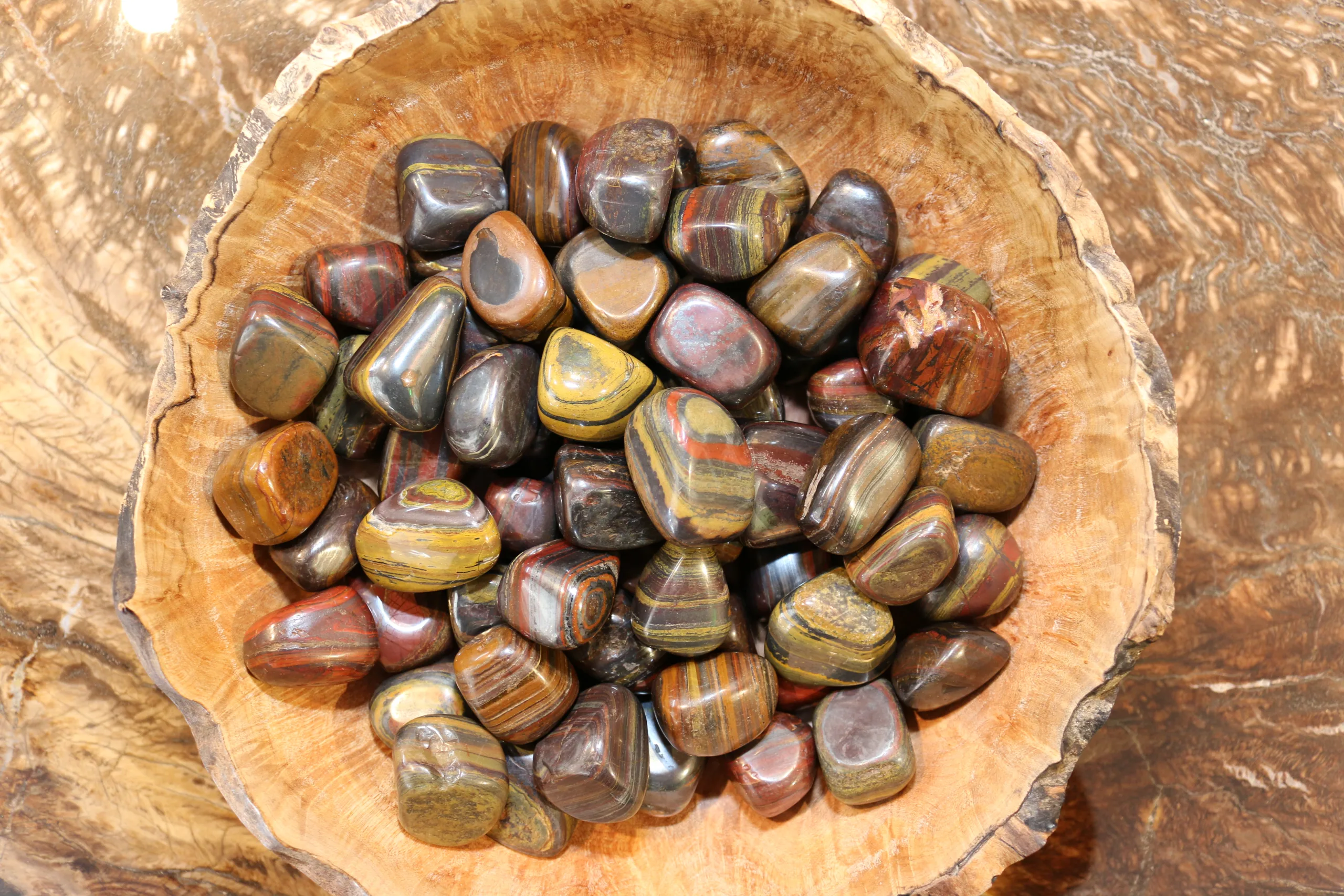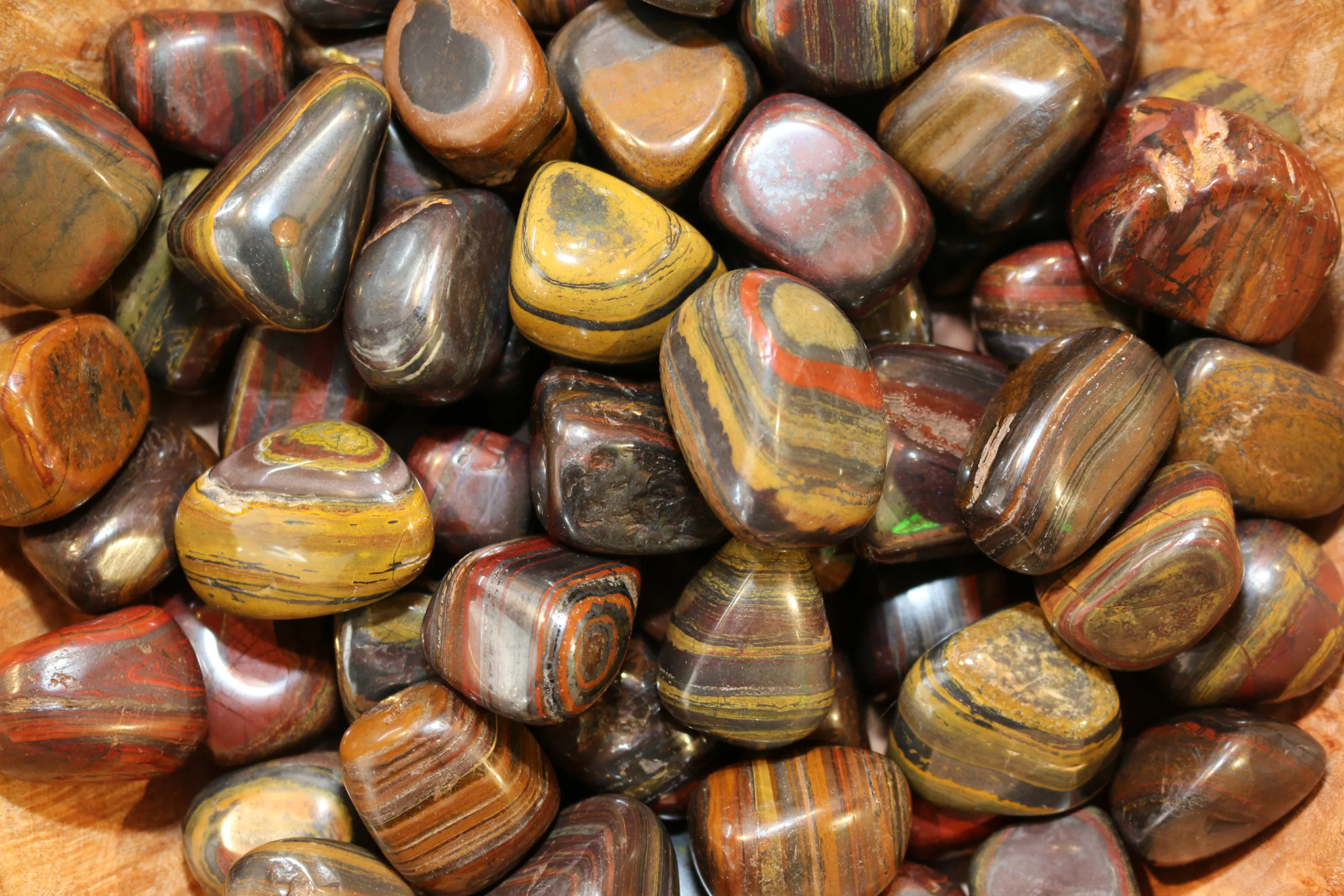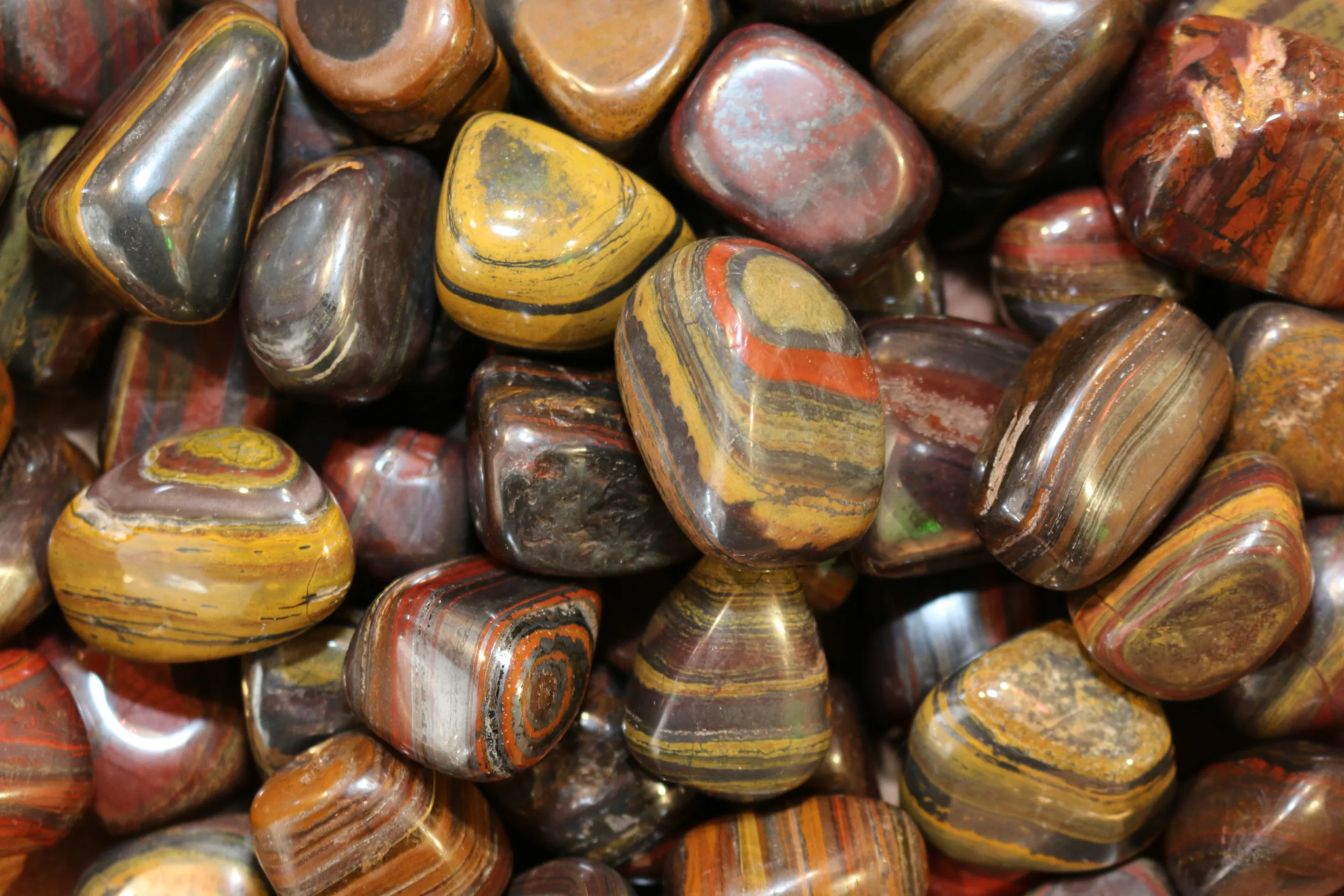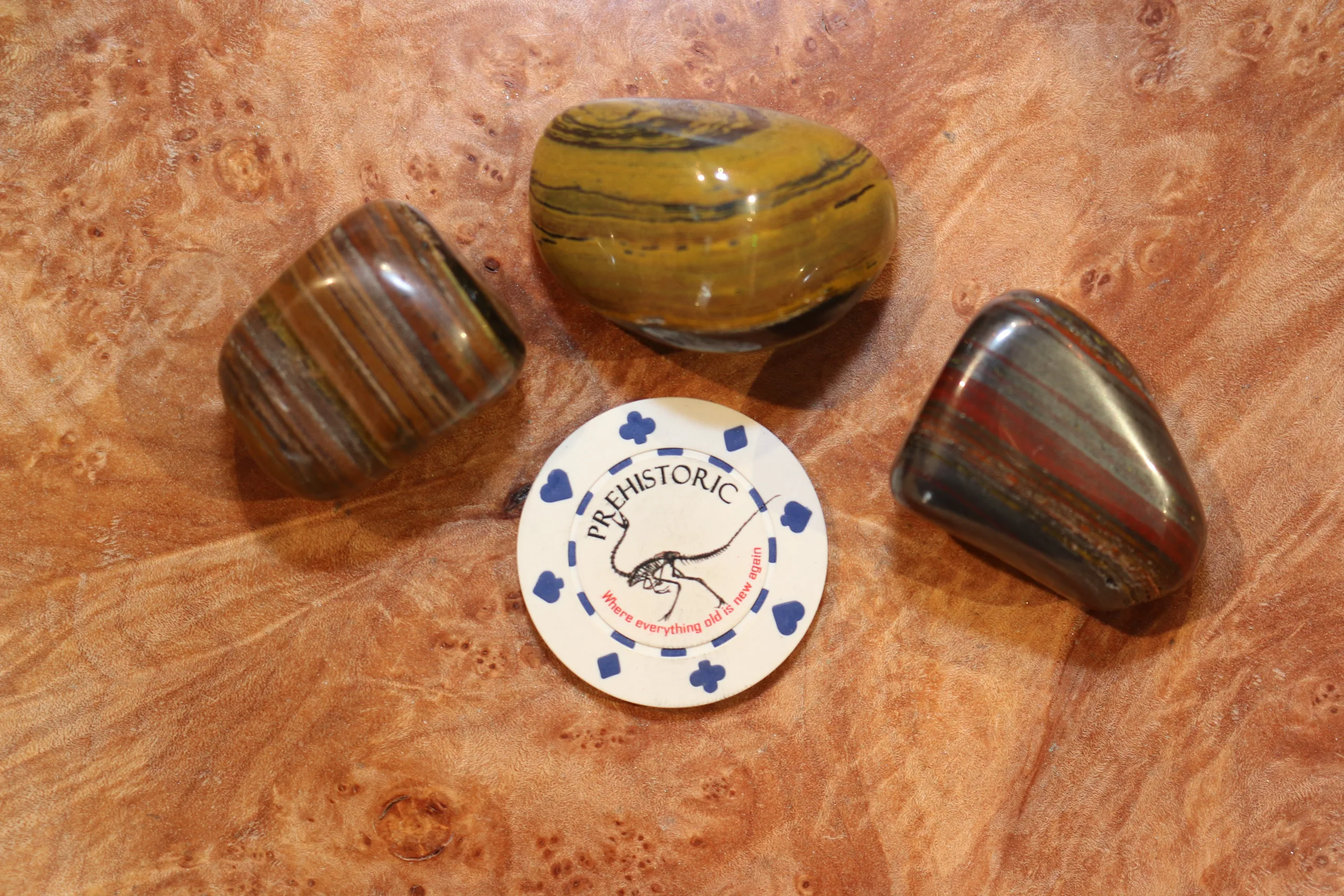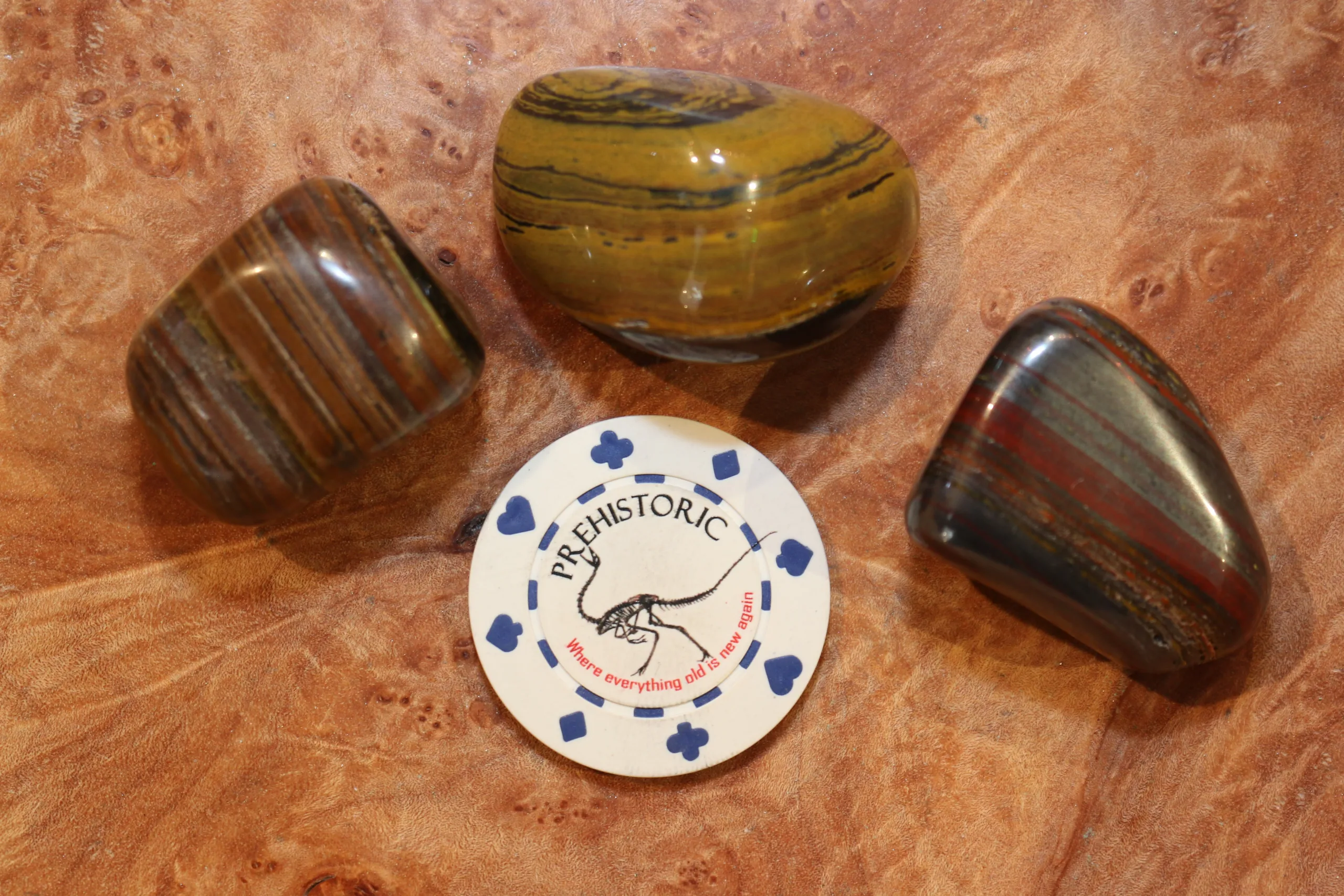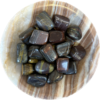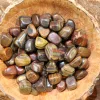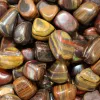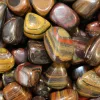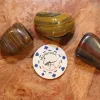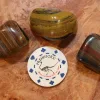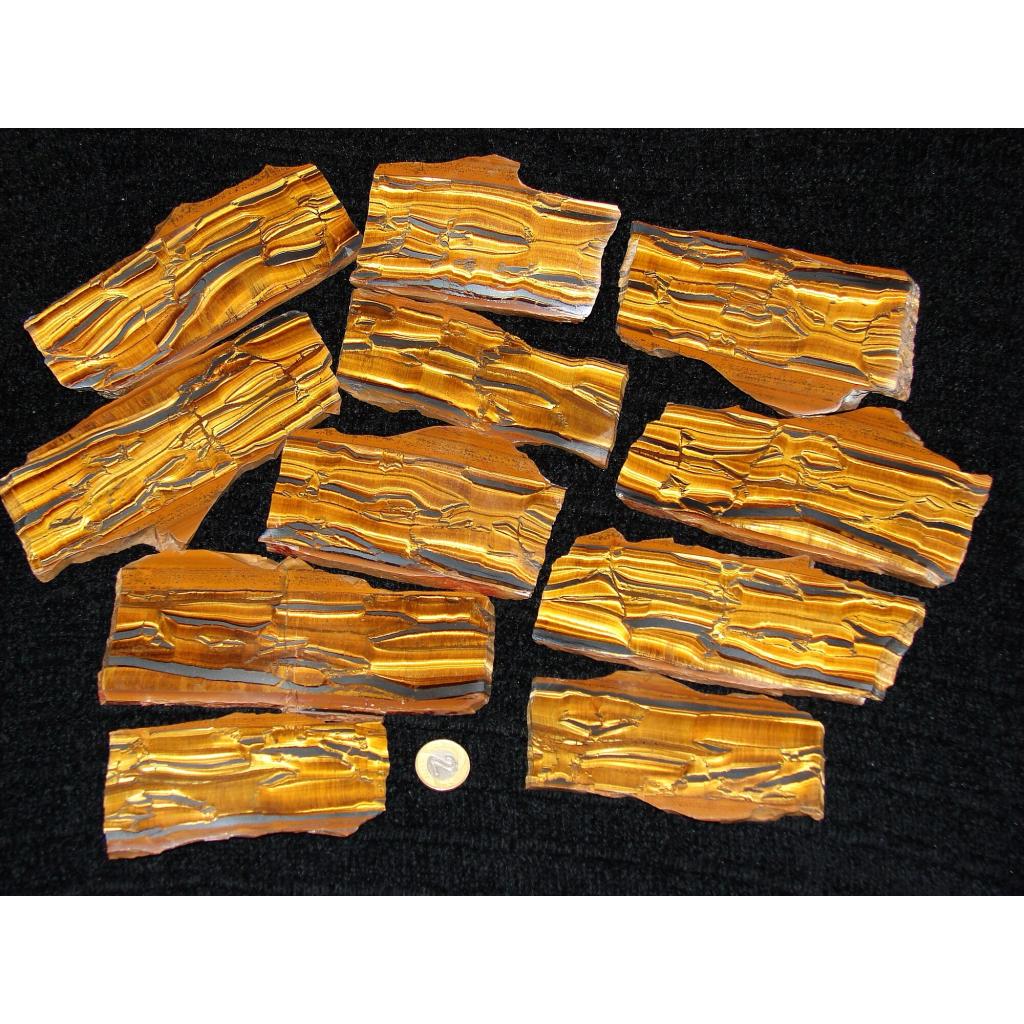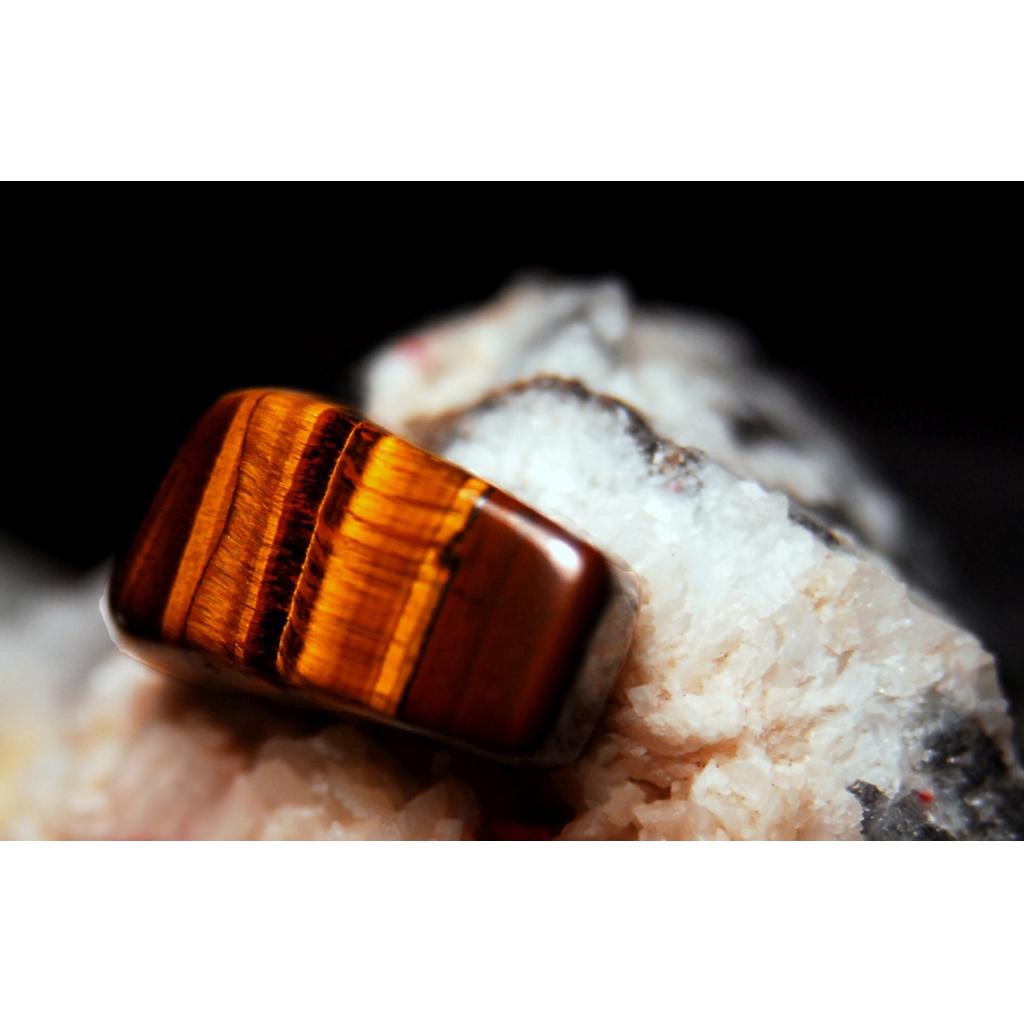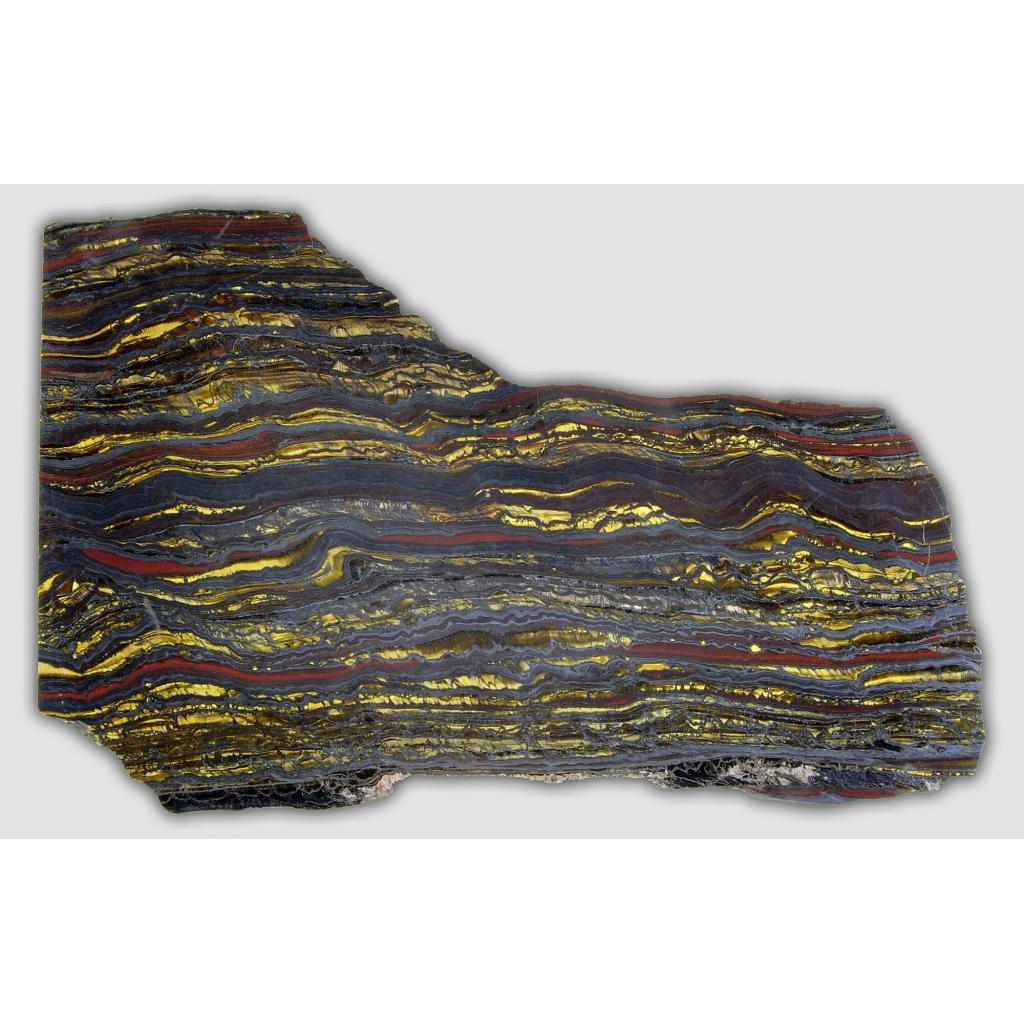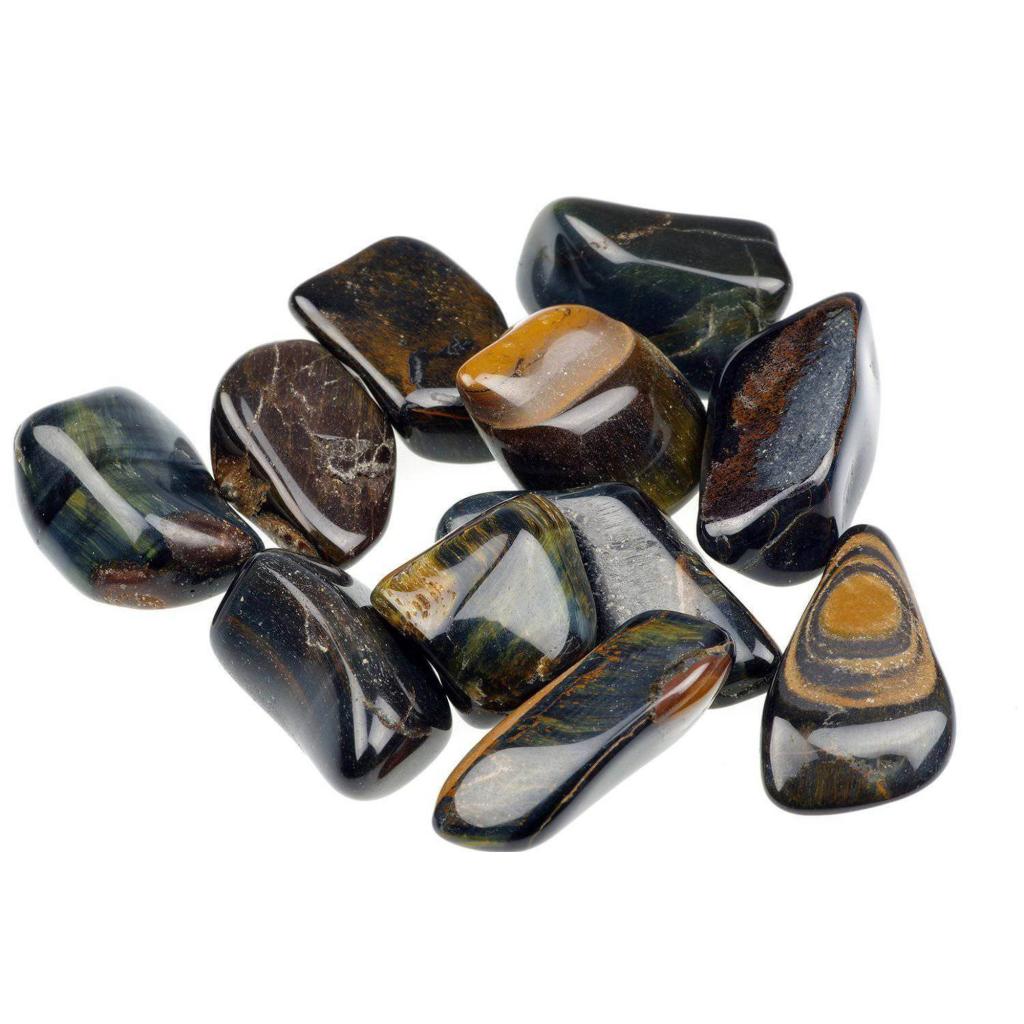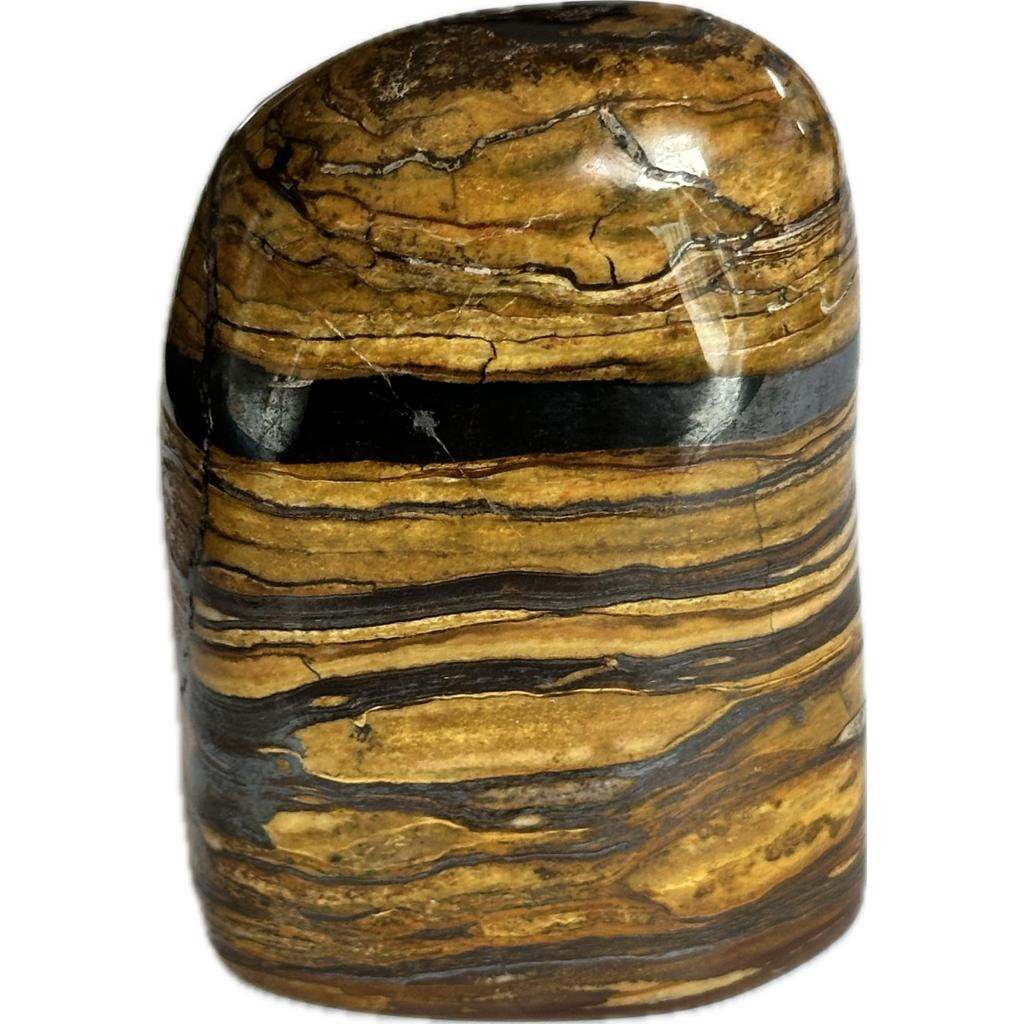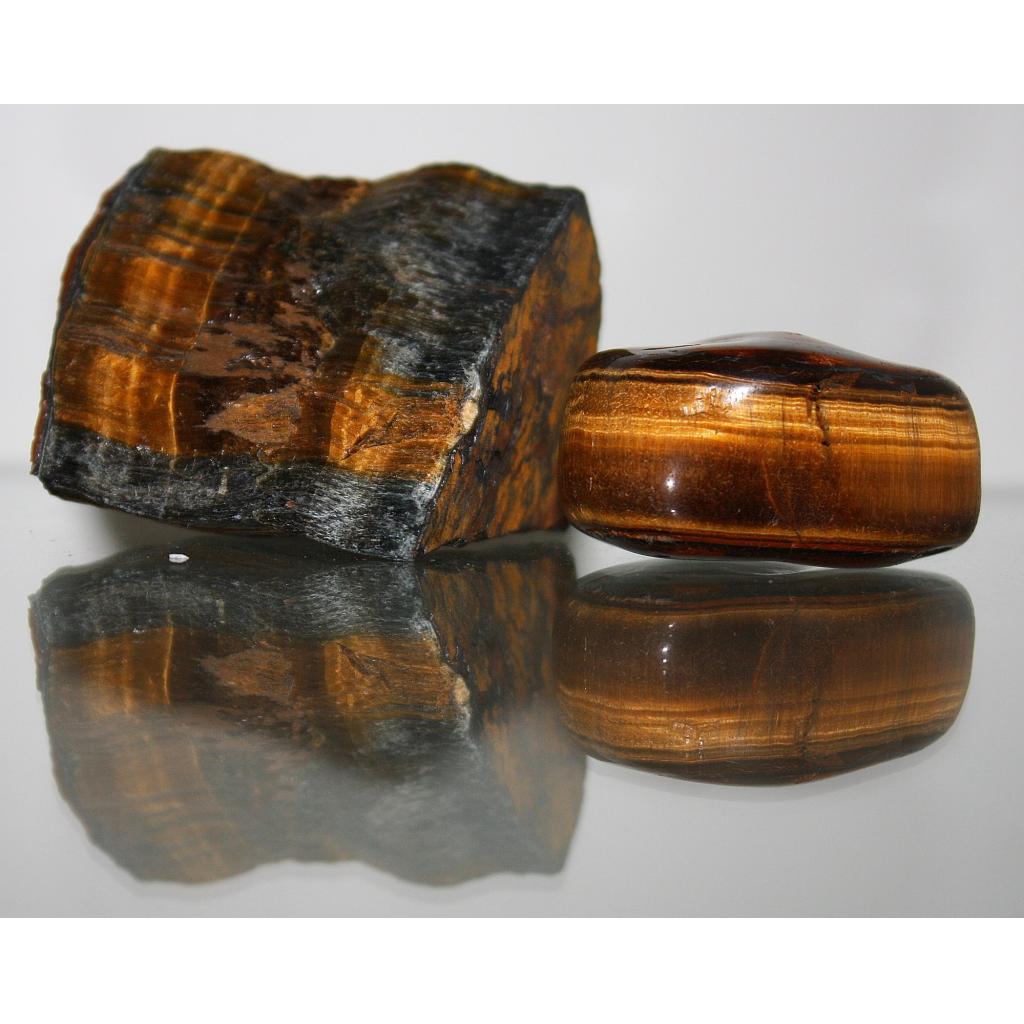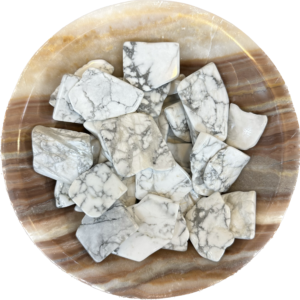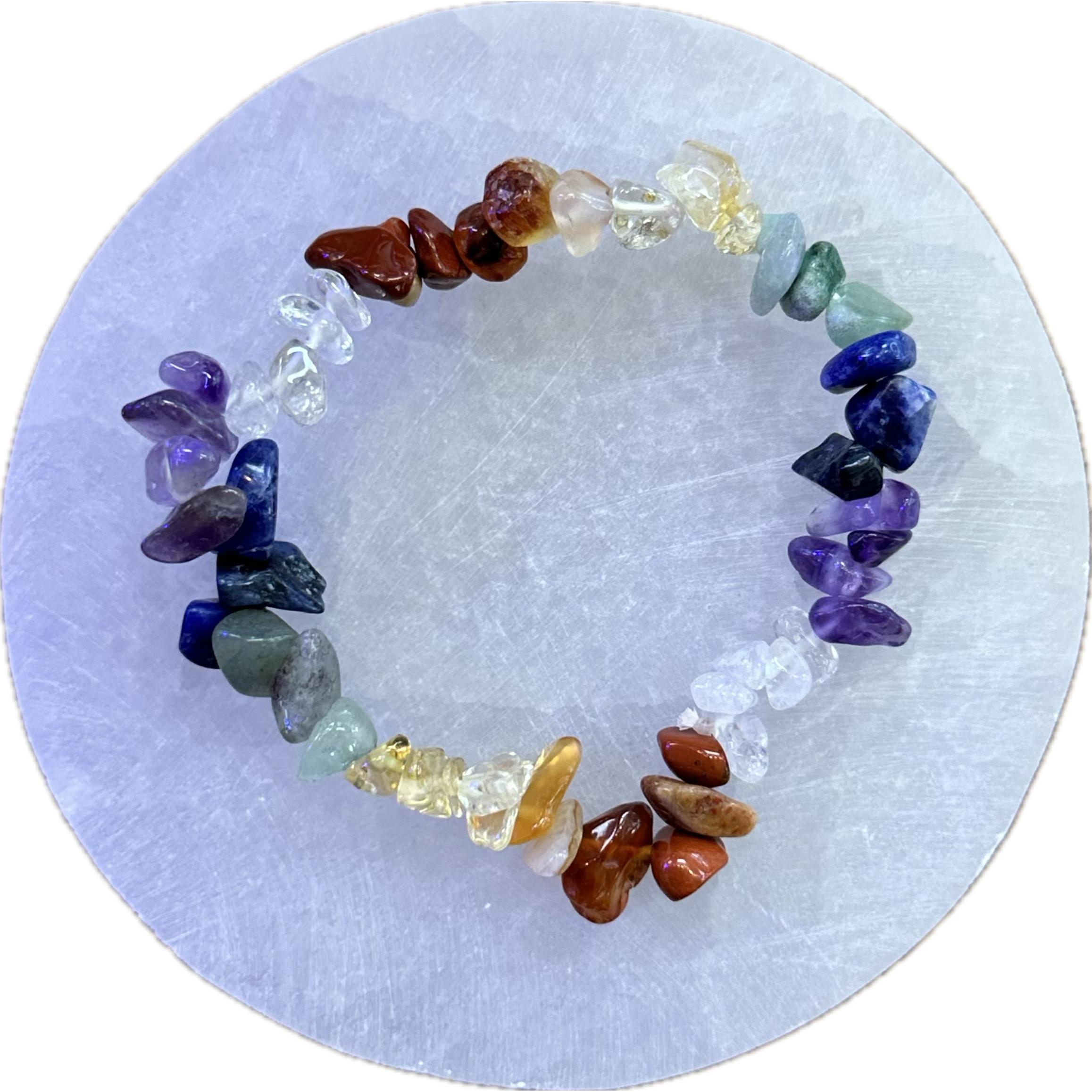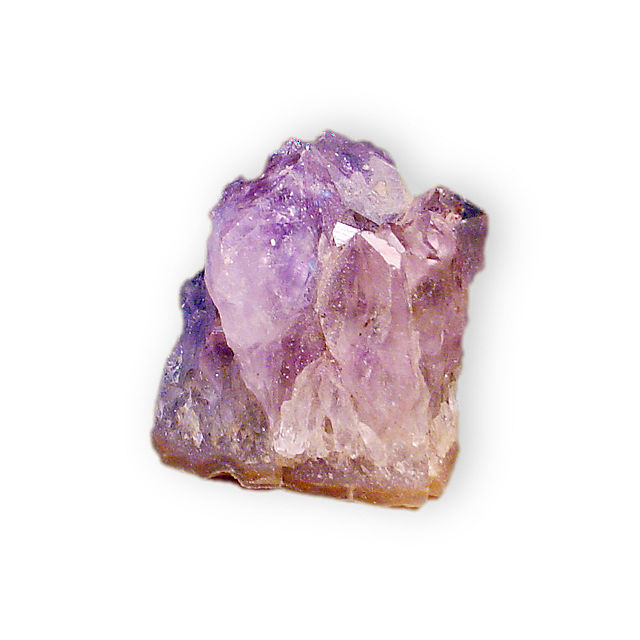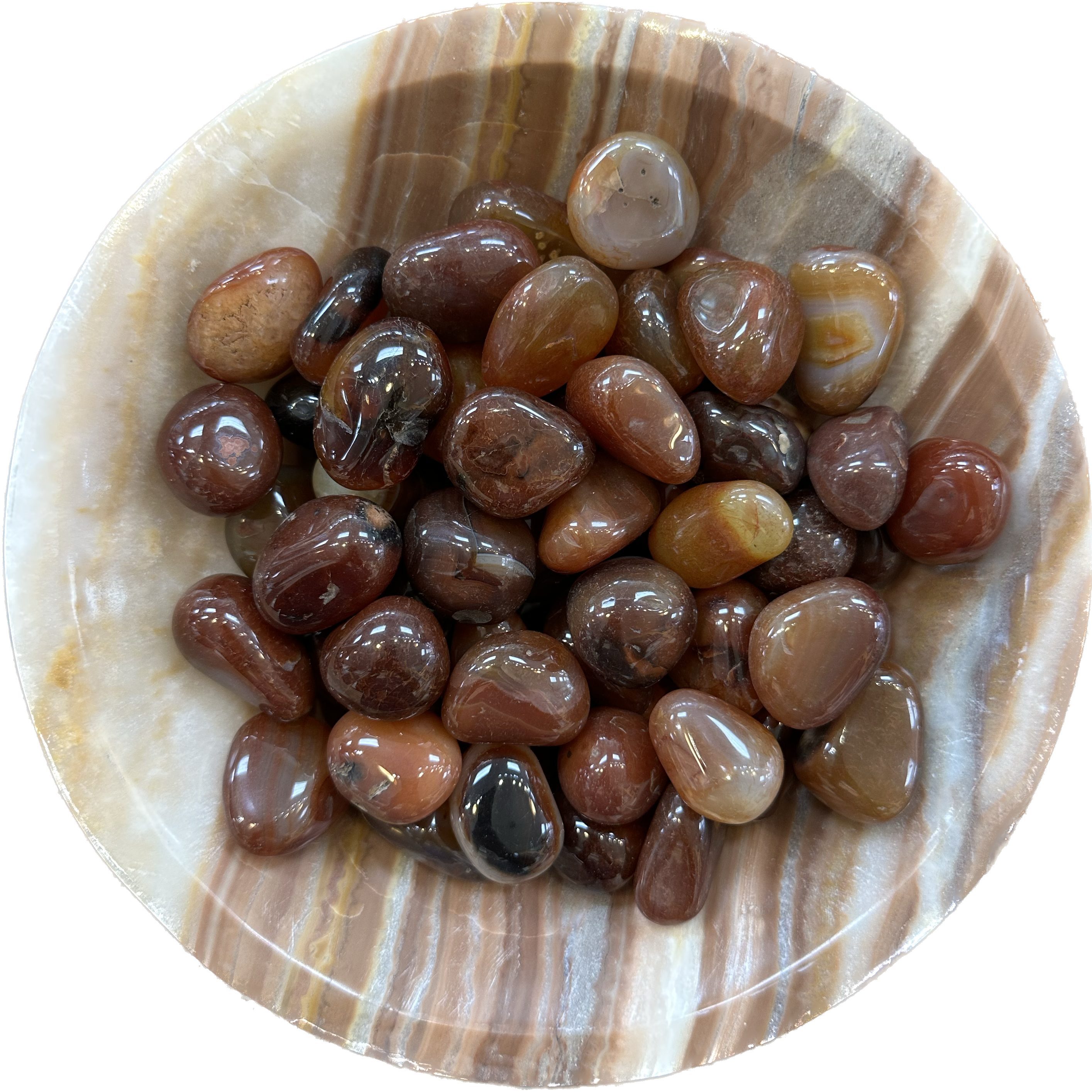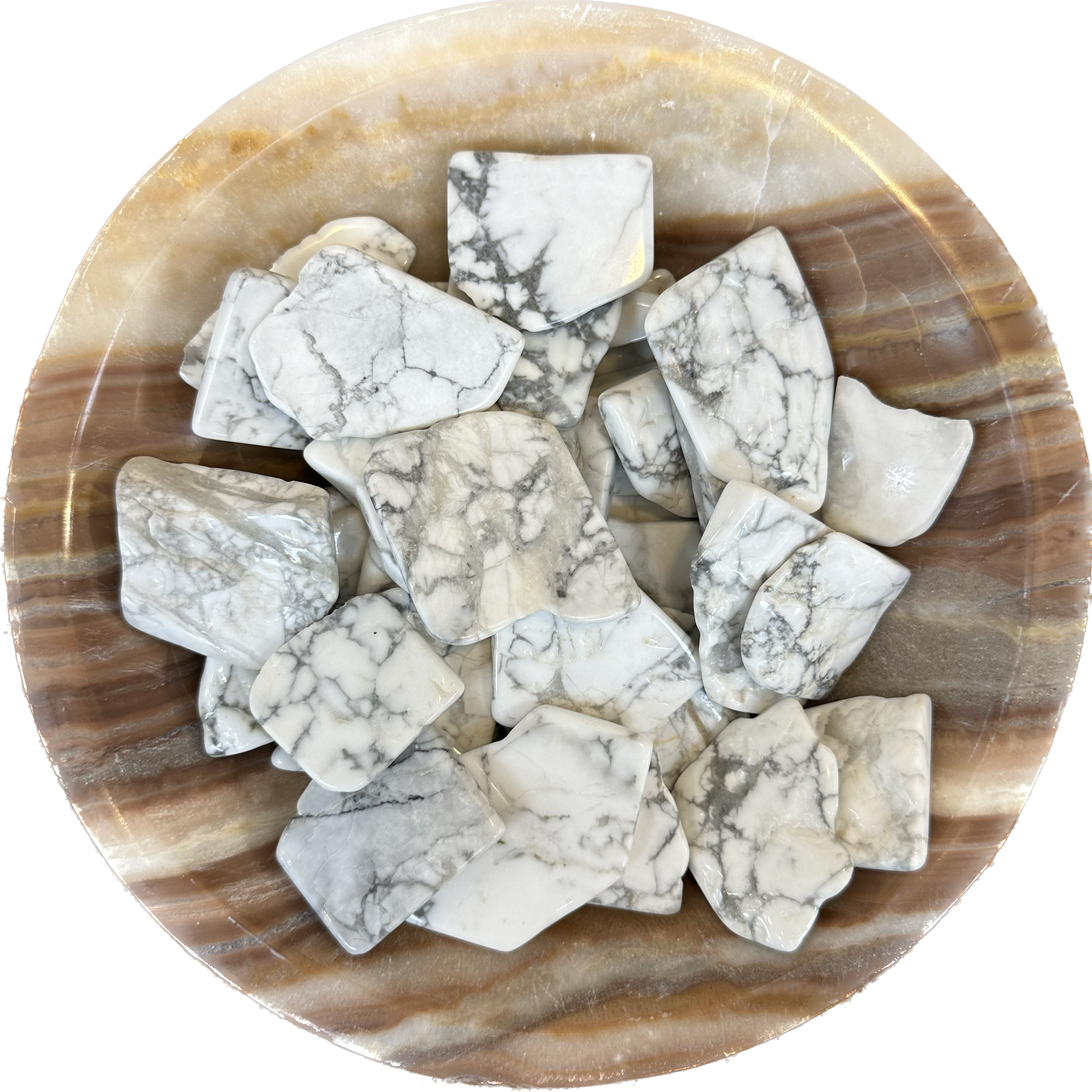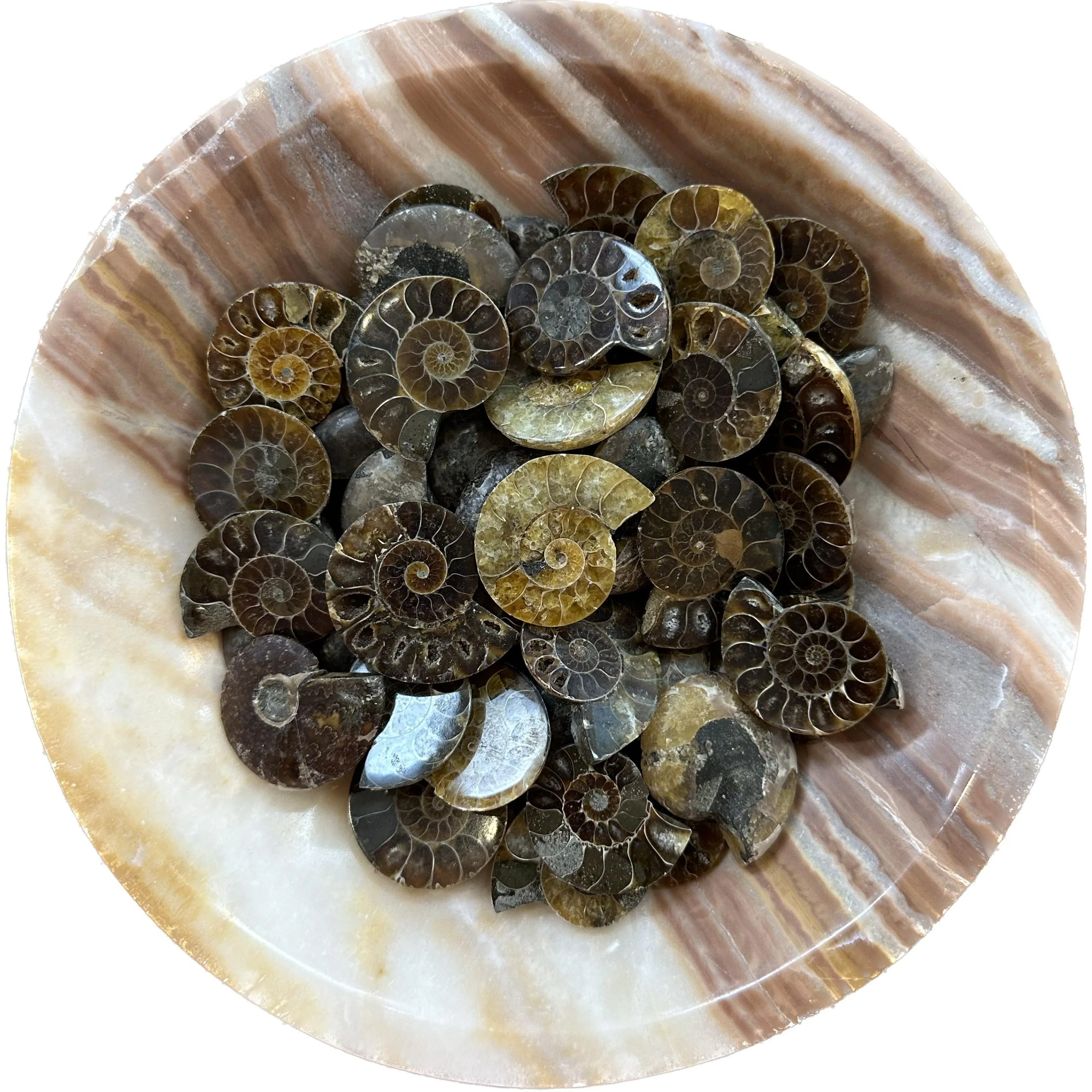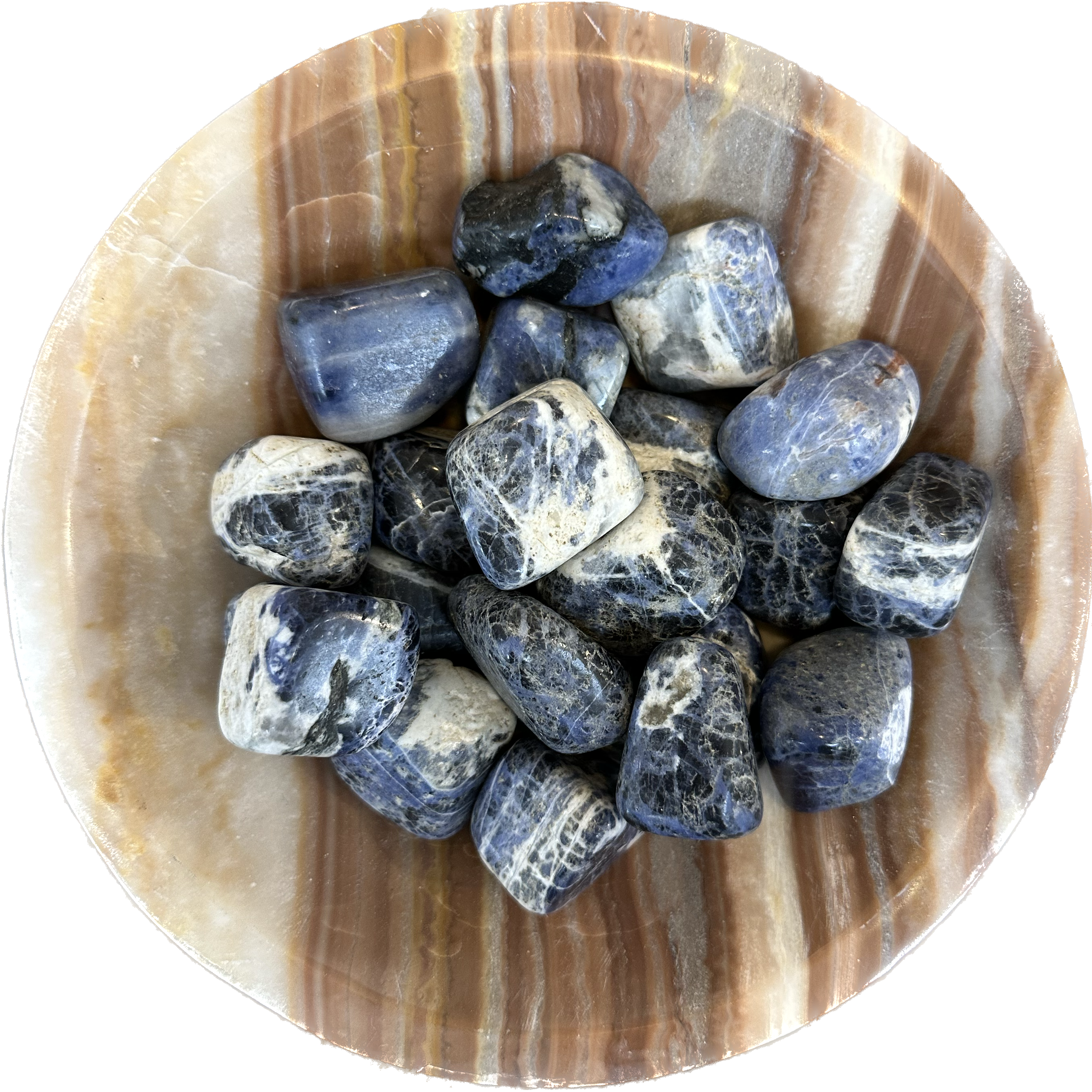Tiger eye and tiger iron are two fascinating gemstones known for their striking appearance and unique properties. Both are formed through natural processes and have been valued for centuries for their beauty and perceived metaphysical properties. In this comprehensive guide, we will delve into the origins, characteristics, uses, and cultural significance of tiger eye and tiger iron.
Tiger Eye:
Tiger eye is a chatoyant gemstone characterized by its silky luster and bands of golden to reddish-brown color. It belongs to the quartz group of minerals and is primarily composed of silicon dioxide (SiO2).
Origins: Tiger eye is formed through a process called pseudomorphism, where one mineral replaces another while retaining the original structure. It typically begins as fibrous crocidolite, a type of asbestos mineral. Over time, the crocidolite fibers are replaced by quartz through a process known as silicification. The resultant material is what we know as tiger eye.
Characteristics: The most distinctive feature of tiger eye is its chatoyancy, or ‘cat’s eye effect,’ which is caused by the reflection of light off the parallel fibrous structures within the stone. This effect creates a shimmering band of light that moves across the surface of the gemstone when it is rotated.
Tiger eye commonly exhibits bands of golden-yellow to reddish-brown color, often with a silky or wavy appearance. These colors are attributed to the presence of iron oxide within the quartz matrix.
Uses: Tiger eye has been prized for centuries for its aesthetic appeal and perceived metaphysical properties. In ancient civilizations, it was often used for ornamental purposes, such as in jewelry, amulets, and decorative objects.
In contemporary times, tiger eye remains a popular gemstone for jewelry, particularly in beads, cabochons, and pendants. It is also used for carvings, cameos, and inlay work.
Beyond its decorative uses, tiger eye is believed by some to possess various metaphysical properties, including promoting strength, courage, and protection. It is thought to enhance confidence, willpower, and clarity of thought.
Cultural Significance: Throughout history, tiger eye has been associated with power, wealth, and protection. In ancient Egypt, it was often carved into amulets and talismans to ward off evil spirits and bring good fortune to the wearer. The stone was also used in burial rites to ensure safe passage to the afterlife.
In Chinese culture, tiger eye is associated with the tiger, a symbol of strength and bravery. It is believed to bring luck and prosperity to those who possess it.
In contemporary metaphysical practices, tiger eye is often used for grounding, balance, and protection against negative energies. It is associated with the solar plexus chakra and is said to promote vitality and self-confidence.
Tiger Iron:
Tiger iron is a unique gemstone comprising layers of tiger eye, hematite, and red jasper. It exhibits a striking blend of colors and patterns, making it highly sought after by collectors and jewelry enthusiasts.
Origins: Tiger iron is formed through a combination of geological processes, including the deposition of iron-rich minerals in sedimentary rock layers. The distinctive bands of tiger eye, hematite, and red jasper are believed to have formed over millions of years through the gradual accumulation of sedimentary materials and subsequent tectonic activity.
Characteristics: Tiger iron is characterized by its rich blend of colors, including golden-yellow tiger eye, metallic gray hematite, and deep red jasper. These colors are arranged in distinct layers or swirls, creating a visually dynamic appearance.
The chatoyant effect of tiger eye is often prominent in tiger iron, adding to its allure and visual appeal. The presence of hematite lends a metallic sheen to the gemstone, while the red jasper contributes warmth and depth to its overall coloration.
Uses: Like tiger eye, tiger iron is prized for its beauty and perceived metaphysical properties. It is commonly used in jewelry, particularly in cabochons, beads, and pendants. The distinctive colors and patterns of tiger iron make it a popular choice for statement pieces and artisanal designs.
In addition to its decorative uses, tiger iron is believed to possess a combination of the metaphysical properties associated with tiger eye, hematite, and red jasper. It is said to promote strength, vitality, and grounding, while also enhancing courage, resilience, and emotional balance.
Cultural Significance: Tiger iron is a relatively recent addition to the world of gemstones and does not have the same extensive cultural history as tiger eye. However, it is often associated with similar themes of strength, protection, and vitality.
In metaphysical practices, tiger iron is valued for its ability to harmonize the energies of the body, mind, and spirit. It is believed to promote a sense of stability and security, making it particularly beneficial for those undergoing periods of transition or challenge.
Overall, tiger eye and tiger iron are two remarkable gemstones with a rich history, unique characteristics, and diverse cultural significance. Whether admired for their beauty, worn for their perceived metaphysical properties, or cherished for their symbolism, these gemstones continue to captivate and inspire people around the world.
Metaphysical:
Metaphysical minerals and crystals are a diverse group of natural formations that are believed to possess unique energetic properties. These stones have been used for centuries in various cultures for healing, spiritual practices, and personal growth. While scientific evidence supporting these beliefs is limited, many people find value in the metaphysical properties attributed to these stones.
Healing stones are a central aspect of the metaphysical use of minerals and crystals. Each stone is believed to emit a specific type of energy that can be beneficial for physical, emotional, and spiritual well-being. For example, amethyst is often used for its purported ability to promote relaxation and reduce stress, while citrine is believed to attract wealth and prosperity. These stones are commonly used in practices such as crystal healing, where the stones are placed on the body or in the environment to balance energy and promote healing.

Birthstones are another important aspect of the metaphysical use of minerals and crystals. These stones are associated with specific months of the year and are believed to bring luck, protection, and other benefits to those born during that month. For example, garnet is the birthstone for January and is thought to bring strength and protection to those born in that month, while amethyst is the birthstone for February and is believed to promote clarity and intuition.
Chakras, the energy centers in the body according to some spiritual traditions, are also closely linked to the use of metaphysical minerals and crystals. It is believed that each chakra is associated with specific stones that can help balance and align the energy of that chakra. For example, the root chakra, which is associated with grounding and stability, is often balanced using stones such as red jasper and black tourmaline, while the heart chakra, which is associated with love and compassion, is often balanced using stones like rose quartz and green aventurine.
In addition to their healing and spiritual properties, metaphysical minerals and crystals are also valued for their aesthetic appeal. Many people are drawn to these stones for their vibrant colors, unique shapes, and interesting textures. Some people collect these stones for their beauty alone, while others use them as decorative pieces in their homes or offices.
Metaphysical minerals and crystals are believed to interact with the body’s energy field, or aura, to promote balance and healing. Advocates of crystal healing suggest that different stones have distinct vibrations that can affect the body’s energy centers, or chakras, and bring them into harmony. For example, placing a blue stone like lapis lazuli on the throat chakra is thought to enhance communication and self-expression.
The use of metaphysical minerals and crystals is not limited to healing practices; they also play a significant role in spiritual and meditative practices. Many people use crystals as aids in meditation, believing that the stones can help focus the mind and enhance spiritual awareness. Clear quartz, known as a “master healer,” is often used in meditation to amplify energy and promote clarity of thought.
One of the fascinating aspects of metaphysical minerals and crystals is their association with astrology. Each zodiac sign is believed to have a corresponding birthstone that can enhance the positive qualities associated with that sign. For example, the birthstone for Aries, the first sign of the zodiac, is diamond, which is believed to enhance courage and clarity. Similarly, the birthstone for Virgo is sapphire, which is thought to promote wisdom and inner peace.
Metaphysical minerals and crystals are also used in rituals and ceremonies to mark significant life events or to enhance spiritual connections. For example, the practice of placing crystals on an altar during a ceremony is believed to amplify the intentions of the ritual and create a sacred space. Some people also use crystals in rituals for protection, prosperity, and other purposes, believing that the stones’ energies can help manifest their desires.
Prehistoric 101 (Learn about fossils, minerals, and meteorites)
The Metaphysical World: A Journey into Healing and Spiritual Enlightenment

